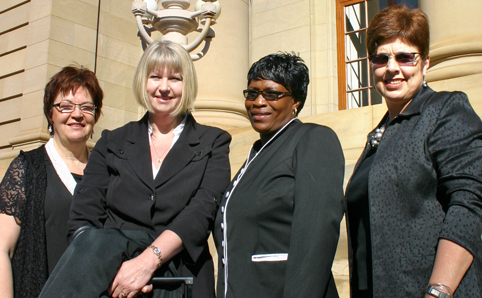|

|
|
At the Supreme Court of Appeal were, from left to right: Dr Beatri Kruger, lecturer in our Department of Criminal and Medical Law at the Faculty of Law; Adv. Ann Skelton, Amicus Curiae instructed by the Restorative Justice Centre; Ms Matsepo Soko, post-graduate student in Criminal Law; and Prof. Annette van der Merwe from the University of Pretoria.
Photo: Leonie Bolleurs
|
Fourth-year and master’s-degree students, from our Faculty of Law, had the privilege of attending the hearing of one of their prescribed cases in the module, Criminal Law, namely the State versus Tabethe, in the Supreme Court of Appeal. Apart from the fact that they could attend the hearing, the students were also addressed by experienced legal experts, Adv. Ann Skelton (amicus curiae, instructed by the Restorative Justice Centre) and Prof. Annette van der Merwe from the University of Pretoria, on the broad outlines of the case.
In this case, the accused was found guilty of raping his fifteen-year-old stepdaughter. The court imposed a sentence of ten years’ imprisonment, suspended in full, but with certain conditions. The conditions include 800 hours’ community service and stipulate that the accused has to follow a rehabilitation programme and that he has to give 80% of his income to the family in order to support the victim and her family.
This was the first rape case where, in following a restorative justice approach, exceptional conditions were imposed to address the interests of the victim who wants to proceed with her studies. The State appealed against the sentence.
Dr Beatri Kruger, lecturer in our Department of Criminal and Medical Law, who prescribed this case for the students, said, ‘The law students were indeed privileged to attend this auspicious and enriching occasion, which provided them with an insightful experience of how the law works in practice.’